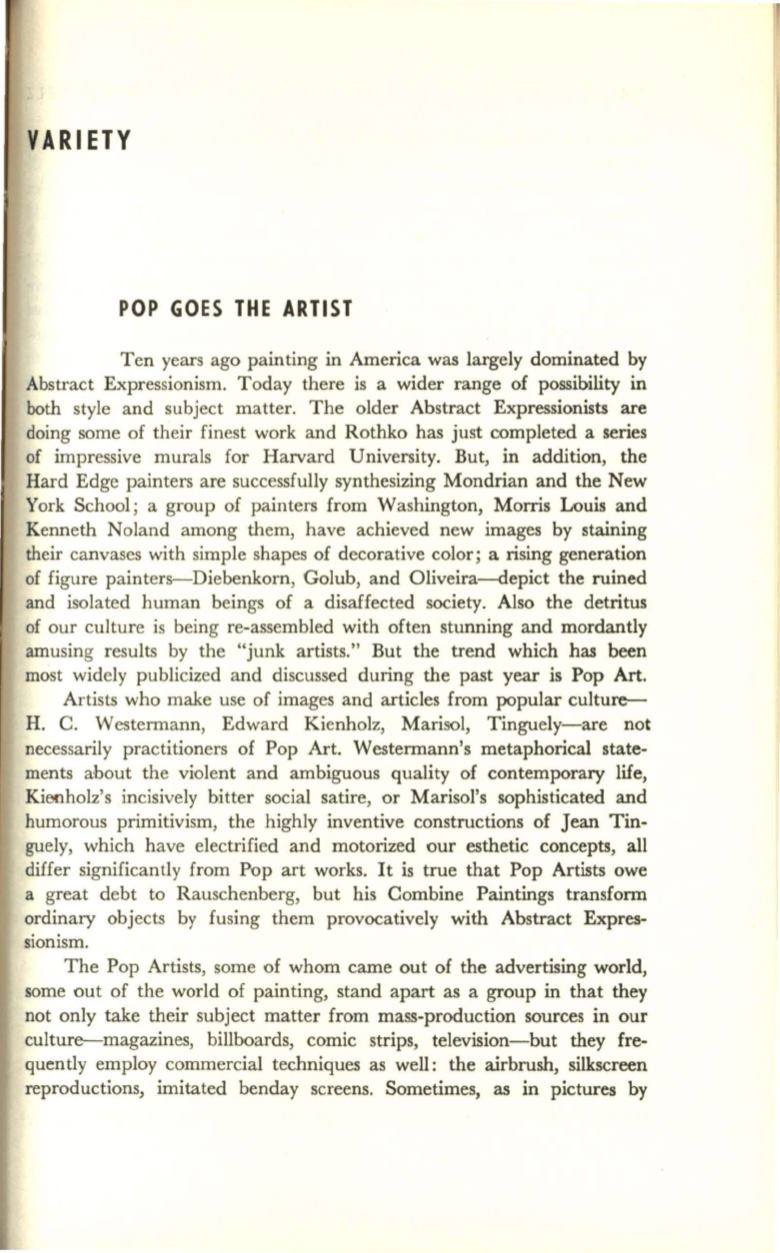
VARIETY
POP GOES THE ARTIST
Ten years ago painting in America was largely dominated by
Abstract Expressionism. Today there is a wider range of possibility
in
both style and subject matter. The older Abstract Expressionists are
doing some of their finest work and Rothko has just completed a series
of impressive murals for Harvard University. But,
in
addition, the
Hard Edge painters are successfully synthesizing Mondrian and the New
York School; a group of painters from Washington, Morris Louis and
Kenneth Noland among them, have achieved new images by staining
their canvases with simple shapes of decorative color; a rising generation
of figure painters-Diebenkorn, Golub, and Oliveira-depict the ruined
and isolated human beings of a disaffected society. Also the detritus
of our culture is being re-assembled with often stunning and mordantly
amusing results by the "junk artists." But the trend which has been
most widely publicized and discussed during the past year is Pop
Art.
Artists who make use of images and articles from popular culture-
H.
C. Westermann, Edward Kienholz, Marisol, Tinguely-are not
necessarily practitioners of Pop Art. Westermann's metaphorical state–
ments about the violent and ambiguous quality of contemporary life,
Kiooholz's incisively bitter social satire, or Marisol's sophisticated and
humorous primitivism, the highly inventive constructions of Jean Tin–
guely, which have electrified and motorized our esthetic concepts,
all
differ significantly from Pop
art
works. It is true that Pop Artists owe
a great debt to Rauschenberg, but his Combine Paintings transform
ordinary objects by fusing them provocatively with Abstract Expres–
sionism.
The Pop Artists, some of whom came out of the advertising world,
some out of the world of painting, stand apart as a group
in
that they
not only take their subject matter from mass-production sources in our
culture-magazines, billboards, comic strips, television-but they fre–
quently employ commercial techniques as well: the airbrush, silkscreen
reproductions, imitated benday screens. Sometimes, as in pictures by


